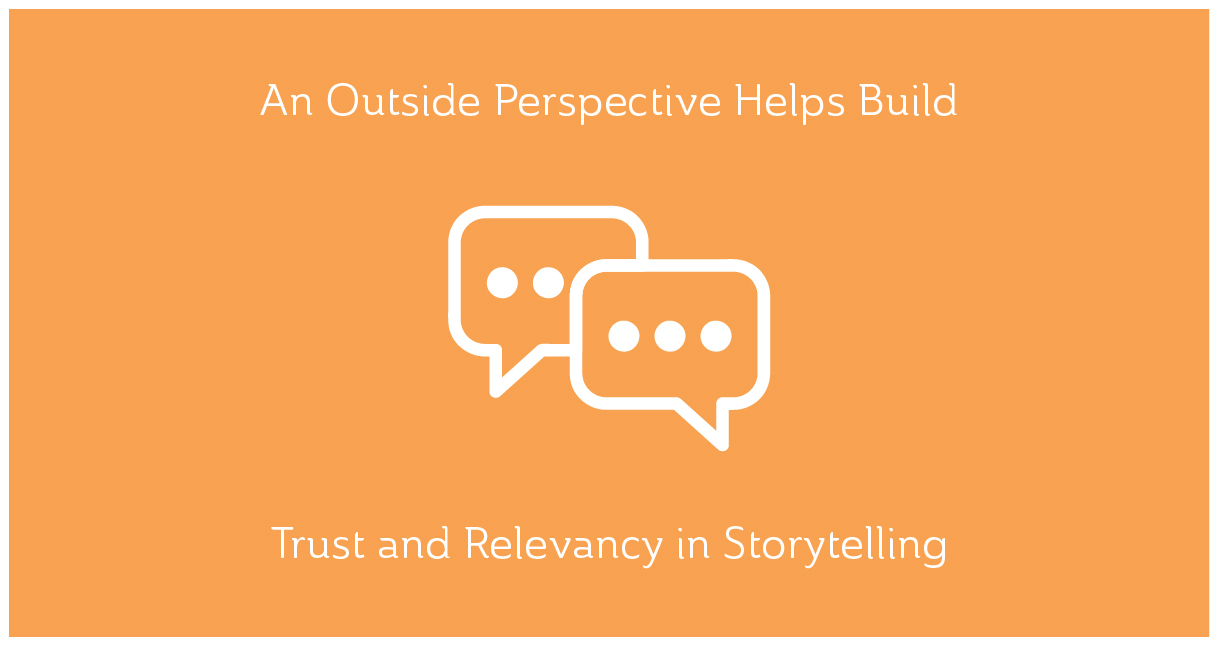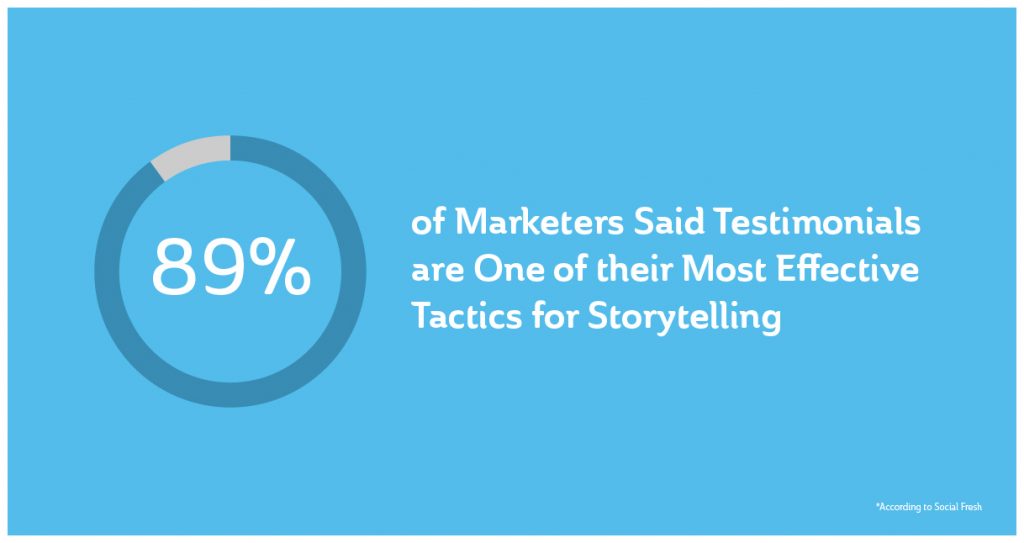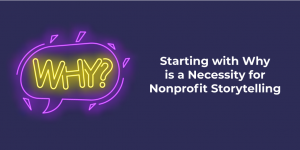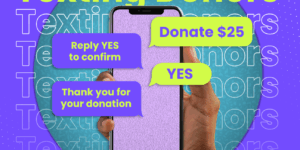In our last post, we introduced the concept of starting with why in your storytelling efforts. If you did not read it, we highly recommend doing so before continuing. In short, starting with your why will allow you to create clear, consistent, mission-centric messaging. In the second part of our series on nonprofit storytelling, we are going to dig into some specific nonprofit storytelling tactics. Let’s get started.
Once you have defined and embraced your organization’s why, you can begin exploring specific strategies to tell your story. In this post, we will discuss how to use testimonials and anecdotes in your communications. These approaches play an essential role in developing powerful stories.
Providing an Outside Perspective
We’ve all seen those commercials with “real people, not paid actors” raving about products and services. The objective, third person account of someone’s experience with an organization speaks to the individual on a deeper level than an official spokesperson can. We think, this is a real person just like me who loves this service. Maybe I need this too.
This is one of the more common storytelling tactics for nonprofit organizations. However, since nonprofits generally are not in the business of creating and selling a product, testimonials should focus on the company’s work and mission. Many times, the most powerful testimonials will come from individuals who have benefited from your nonprofit’s work.
For example, if your organization works to provide clean drinking water to underserved communities, your most powerful testimonial could come from a mother who has seen the overall health and happiness of her children improve since the organization began working in her community.
Some organizations work with partners or are involved in a field where they are further removed from the end-user impact. There is still an opportunity for these organization to use testimonials, even if it comes from a partner organization.
Who Should Tell the Story?
These bits of evidence can come from several sources, including beneficiaries, volunteers, and the community surrounding your organization’s work. As long as you make sure that each testimonial relates to your nonprofit’s why, telling these stories will serve as a powerful tactic to build emotional investment, provide tangible proof that your work matters, and encourage action from donors.
We like to see quotations in news stories from the people involved because an objective voice from someone close to the issue builds trust and relatability. Think of using testimonials in your communications in the same way. This storytelling tactic is all about developing credibility and trust. Testimonials prove to your audience that whatever your organization is doing works.
Going Further With Anecdotes
Using anecdotes is one of the best storytelling tactics for creating emotional connections. Like testimonials, these can come from a number of sources. However, the most powerful stories will be about people who benefit from your organization’s work.
You can uncover emotionally compelling stories by encouraging a subject to go beyond the surface of their experience. Take the same mother from our earlier example. Having her on the record thanking your organization for their work is great! However, you can tell an even better story if she goes into detail and describes specific examples of how tough things were and how your organization stepped in to help.
Storytelling Tactics Should Appeal to Emotion
Imagine reading a story about a child’s deteriorating health, caused by low-quality drinking water. As you read about the child’s conditions you feel sorry for them. You may even say, “This is terrible, there must be some way to help!” You continue reading and learn how one person helped make a difference with the help of a nonprofit. As you continue, you learn how the child’s health improved once the organization began helping the community. You may even see a picture of what that healthy, smiling child looks like today.
As a potential donor reads this story, they build an emotional connection with your organization, community, and people involved. Using this storytelling tactic will make it easy for the prospective donor to say “yes” when they are asked to contribute to the cause. They understand why your organization matters and want to help.
In this example, we use an anecdote to help potential donors envision what is possible with their support. However, they can also be used to highlight the void that would be left with a lack of donations. Every story may not have a happy ending, at least not yet, because “we need your help!” These storytelling tactics help potential donors relate to your organization on a deeper level. Powerful anecdotes encourage your audience to engage further and provides you with a strong foundation for a new donor-organization relationship.
More Tips for Telling a Powerful Story
In our next post, we will explore specific techniques for making the donor the hero of your story. In the meantime, here’s some more tips to make your storytelling communications more effective while using the tactics we discussed above:
-
Stories should focus on real people who need something your organization provides.
-
Let the reader know you are telling a real person’s story by sharing their name, age and other relevant information.
-
Focus on capturing meaningful measurements. Sharing measurements that relate closely to your message proves you’re fulfilling your mission.
-
Your story should focus on a subject your audience can relate to. Have them mentally place themselves, or a loved one, in the same position as the person you are describing.
-
Most people have a short attention span, start pulling the emotional strings early in your story.
-
Pictures are worth 1,000 words. They can say the things you cannot and provide subtle psychological pushes to the audience.
-
If using pictures is a powerful storytelling tactic, video is the almighty strategy. Think about how you feel every time an animal cruelty prevention commercial pops up on your TV.
-
Provide opportunities for people to share their story with you. This can be through social media or more personal connections.
-
Integrate these stories in all public-facing collateral. Websites, emails, appeals, and stewardship materials are the most obvious places for a story, but internal documents and materials can do the job as well.
Hopefully this can of help when you are thinking about specific storytelling tactics to employ in your communications. Be sure to check back next week for our post detailing donor stewardship strategies.









